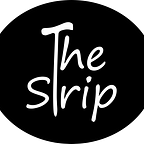OBEY: when art enters politics!
Defined by art critic Peter Schjeldahl as “the most effective American political illustration since Uncle Sam”, the “Hope” (Obama) poster created by street artist OBEY is one of the most iconic political images in modern history.
The work of art created by Obey (aka Shepard Fairey), composed of a stylized portrait of the young Democratic candidate staring steadfastly into the distance, evokes the feeling of genuine progressive optimism that dominated the entire Obama campaign. What few people know is that in reality Obey’s graphics are the result of a four-color reworking (in the colors: cream, black, red and blue) of a photograph taken in 2006 of the then Senator Obama while he was in the company of George Clooney upon returning from a trip to Darfur.
The author of the photo, photographer Mannie Garcia, was however part of the National Press Photographers Association, an association whose code of ethics expressly prohibits the photos it commissioned and exhibited from being used in political propaganda campaigns.
For this reason, street artist Shepard Fairey risked being accused of misappropriation of sources under the copyright law. Fairey did not deny the use of this source, but defended himself from the accusation by claiming that he had appropriated the material object (the photo) but not its essence, giving instead a more personal and profound meaning to the work. He did not hide, for example, that he was also inspired by a very similar posed portrait of John Fitzgerald Kennedy to create this work and the others in the triptych.
Also due to this accusation (later dropped) of copyright infringement (or perhaps due to the 19 arrests for vandalism brought by the police to OBEY for his desire to illegally exhibit his art), the Democratic Electoral Committee he has always declared that he has never had direct contact with the artist, even if we know for sure that he began working on the project when, in the months preceding the vote, the exit polls gave the opponent candidate, the Republican McCain, as the winner.
However, it was President Obama himself who, once elected, sent him a letter in which he openly thanked him for his creative contribution to his campaign: “I have the privilege of being part of your work of art and I am proud to have your support” are his words.
The success and diffusion of Obey’s works of art called “Hope” and of the other two portraits of Obama included in the triptych (“Progress” and “Vote”) was enormous, so much so that in October 2008, one month after ‘final election, over 300,000 reproductions of the poster and a million stencils were sold, which is why there are many who argue that, in some way, this image has contributed to the growth of popularity and therefore to the affirmation of Obama as 44th president of the United States of America.
For the emotional and expressive charge of this work by Shepard Fairey, some argue that the latter managed to transform the first African-American president of the United States of America into a true contemporary pop icon just like Andy Warhol had done with the celebration of his icons taken from the world of cinema and politics (from Marilyn Monroe to Mao, from Liz Taylor to Kennedy).
But where exactly does the creative force of “Hope“ and of Obey’s other works of art created for propaganda, social and political purposes come from, including the mural “Liberté Egalité Fraternité” created by the artist in Paris after the terrorist attacks of November 13, 2015 and donated, in the form of a painting, to the Elysée where it is now exhibited?
It’s Shepard Fairey himself who tells us. The multifaceted artist, who today is committed to supporting the Silverlake Conservatory of Music, a non-profit music education organization founded by his friend and bassist of the Red Hot Chilli Peppers Flea, claims that his passion for street art is born from his other passions: skateboarding and punk rock. From there, the idea of creating stencils, stickers and home-made posters with a high artistic content was born in order to make graphic art even more popular and increasingly “democratically usable”.
But that is not all. OBEY, in fact, is a fine connoisseur of issues related to power and propaganda. Its very name derives from the English “Obey” (to obey) and is inspired by a film by John Carpenter entitled “They live” which deals with the theme of subliminal propaganda.
In addition, the street artist has repeatedly expressed himself on the theme of obedience in advanced societies, with references to Orwell and Bradbury. This commitment has led him, for example, to support campaigns such as the one concerning the reform of prisons in favor of the weakest and dispossessed and to create images such as those relating to the “Power & Equality” project to support of gender equality and women’s empowerment everywhere, but with a direct link to the Lower East Side through the portrait of the actor, activist and board member of the Lower East Side Girls Club Rosario Dawson.
“Hope”, the stylized four-color portrait of Barak Obama, is part, like other street art works, of the permanent collection of the National Gallery in Washington. Recently, it was also possible to admire works of art by Obey in Italy at the Palazzo Ducale in Genoa as part of an exhibition dedicated to this extraordinary artist.
To admire one of the beautiful murals that Obey created along the city streets, it is possible to head, among other places, to Venice, Paris, Berlin, Vienna, Copenhagen and Grenoble.
